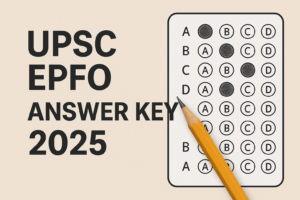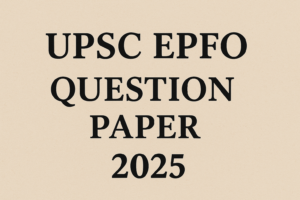Q No.4- Discuss the nature of Jammu and Kashmir Legislative Assembly after the Jammu and Kashmir Reorganization Act, 2019. Briefly describe the powers and functions of the Assembly of the Union Territory of Jammu and Kashmir. (10 Marks, 150 Words)
| Approach: Begin with the J&K Reorganization Act, 2019 and the abrogation of Articles 370 & 35A, noting the shift from statehood to a UT with legislature. In the body, discuss the nature of the Assembly before and after 2019 in terms of tenure, size, legislative competence, and executive authority. Then briefly outline the powers and functions of the UT Assembly (legislative, financial, executive, representative) with examples (e.g., land laws, budget, delimitation). Conclude by emphasizing its limited powers under central oversight, yet its role in ensuring democratic representation and integration. |
Model Answer
The Jammu and Kashmir Reorganization Act, 2019 which came into force in 2019, following the abrogation of Article 370 and 35A, bifurcated the state of Jammu and Kashmir into two Union Territories (UTs) viz. UT of Jammu & Kashmir and UT of Ladakh. This marked a fundamental shift like governance in the region, altering the powers and status of the legislative institutions.
Nature of Jammu and Kashmir Legislative Assembly
| Aspect | Before 2019 (State of J&K) | After 2019 (UT of J&K) |
| Status | Full-fledged State Legislature with its own Constitution (under Article 370). | Union Territory with Legislature, similar to Delhi & Puducherry (Article 239A). |
| Tenure | 6 years (unique among Indian states). | 5 years (brought in line with other states/UTs). |
| Size & Structure | 111 seats (including 24 reserved for PoK). Effective strength: 87 seats. | 107 seats (24 reserved for PoK). Effective: 83 seats.
Subsequently, the Delimitation Commission report (2022), operationalized via the Jammu and Kashmir Reorganisation (Amendment) Act, 2023, increased the total seats to 114 (90 elected seats, with 7 reserved for SCs and 9 for STs, and 24 seats remaining vacant for PoK). |
| Legislative Competence | Separate Constitution of J&K. The state legislature had residuary powers; special autonomy over subjects except defence, foreign affairs, and communications. | No separate Constitution. Residuary powers with Parliament. Legislature can make laws on State & Concurrent List (except public order, police). |
| Executive Authority | The governor acted mostly on the aid and advice of the elected CM & Council of Ministers. | Lt. Governor has wider discretion, especially in public order & police. Appointed by the President. |
| Special Status | Article 370 & 35A granted special autonomy, including separate flag and permanent resident laws. | Article 370 abrogated; special status revoked. Uniform laws of India apply. |
Functions of the Assembly of the Union Territory of Jammu and Kashmir
- Legislative Powers
-
-
- Can legislate on subjects in the State List and Concurrent List (except public order & police which are kept with the Centre).
- Parliament has overriding powers, and the Lt. Governor can reserve bills for the President’s assent.
- Eg: Any law on land ownership or domicile now requires Union approval.
-
- Financial Powers
-
-
- The Assembly can pass the Annual Budget for the UT, but financial autonomy is limited compared to a full state.
- Money bills can be introduced only with the prior recommendation of the Lt. Governor.
-
- Executive Powers
-
-
- A Council of Ministers, headed by the Chief Minister, aids and advises the Lt. Governor.
- However, the Lt. Governor is not bound to act on such advice in matters concerning police & public order.
-
- Representative Function
-
- Provides political representation and a forum for articulating the aspirations of the people of J&K.
- Retains the capacity to debate policies, raise local issues, and ensure accountability of the executive.
- Delimitation and Reservation: The 2019 Act mandated a Delimitation Commission to redraw boundaries, with seats reserved for Scheduled Castes and Scheduled Tribes for the first time, aiming at wider inclusivity and political representation.
The present Assembly thus symbolizes democratic representation under strong central oversight. Yet, incidents like the Pahalgam attack highlight frequent Centre–UT blame games on security and governance, underlining the need for cooperative federalism to balance local aspirations with national integration.
Note: This is the only instance when a state has been reduced to a status of UT. Reducing iuts autonomy and democratic functioning.

 UPSC EPFO Cut Off 2025 (Expected): Categ...
UPSC EPFO Cut Off 2025 (Expected): Categ...
 UPSC EPFO Answer Key 2025 Out (Unofficia...
UPSC EPFO Answer Key 2025 Out (Unofficia...
 UPSC EPFO Question Paper 2025 PDF Downlo...
UPSC EPFO Question Paper 2025 PDF Downlo...

























